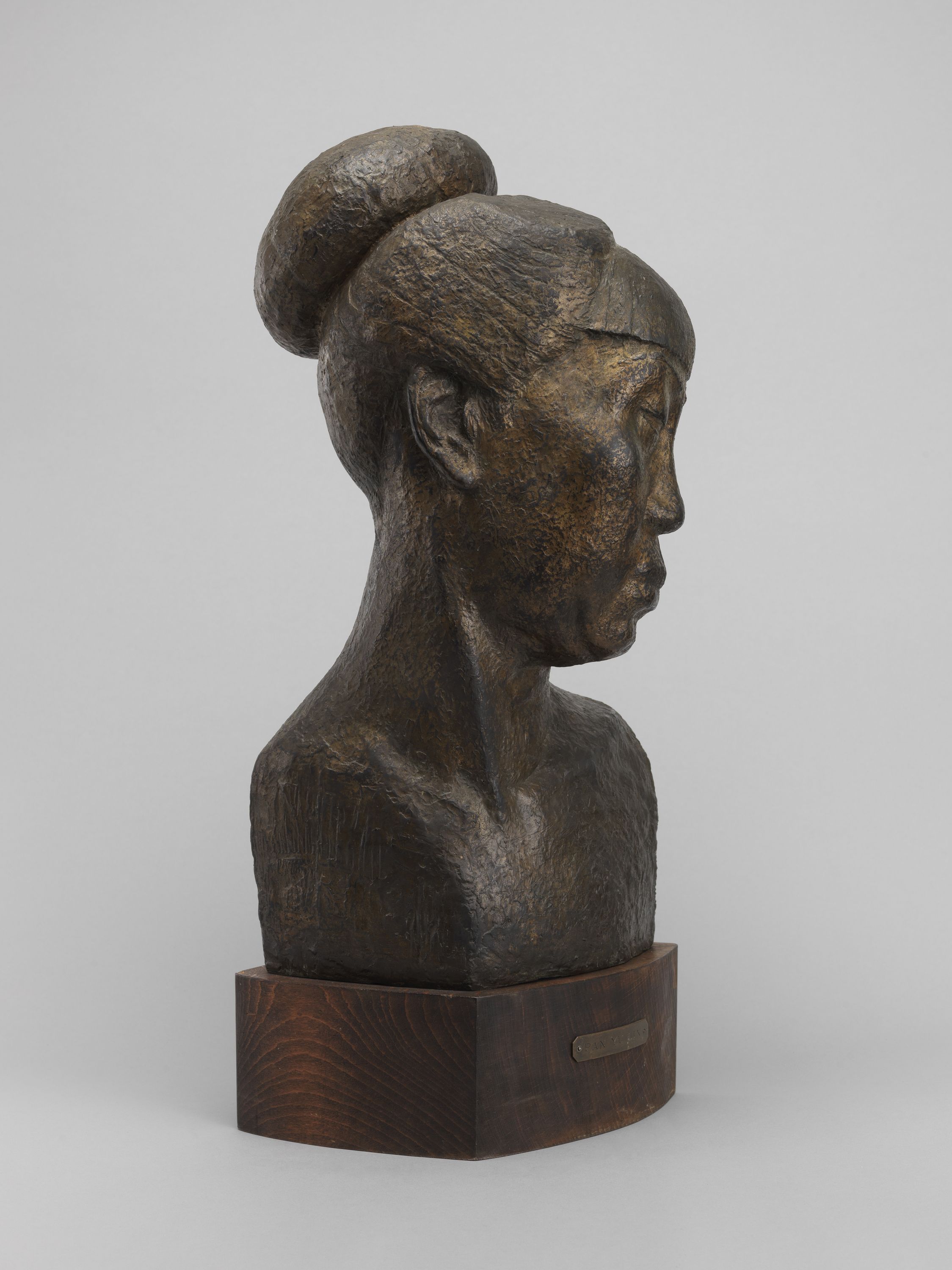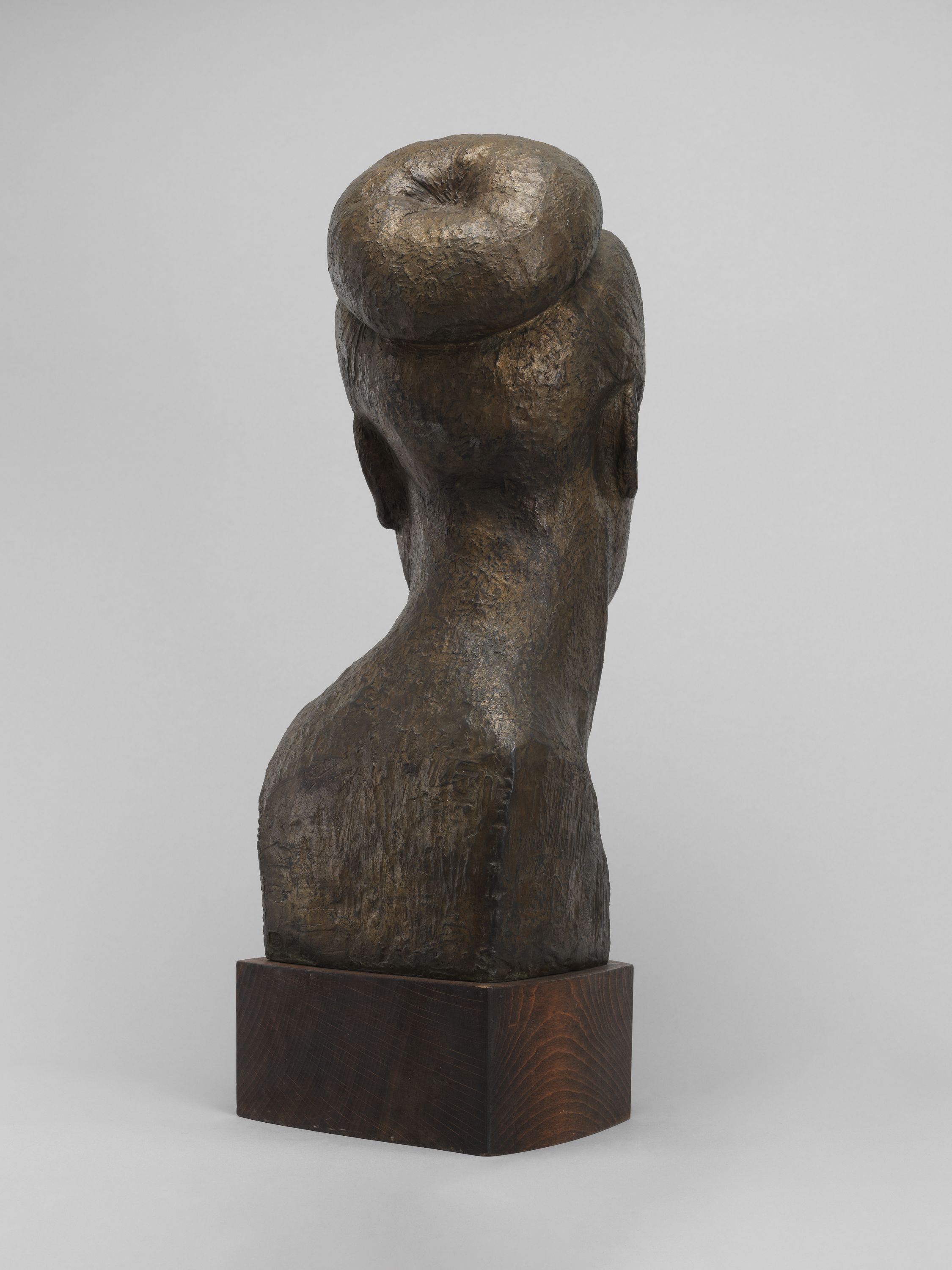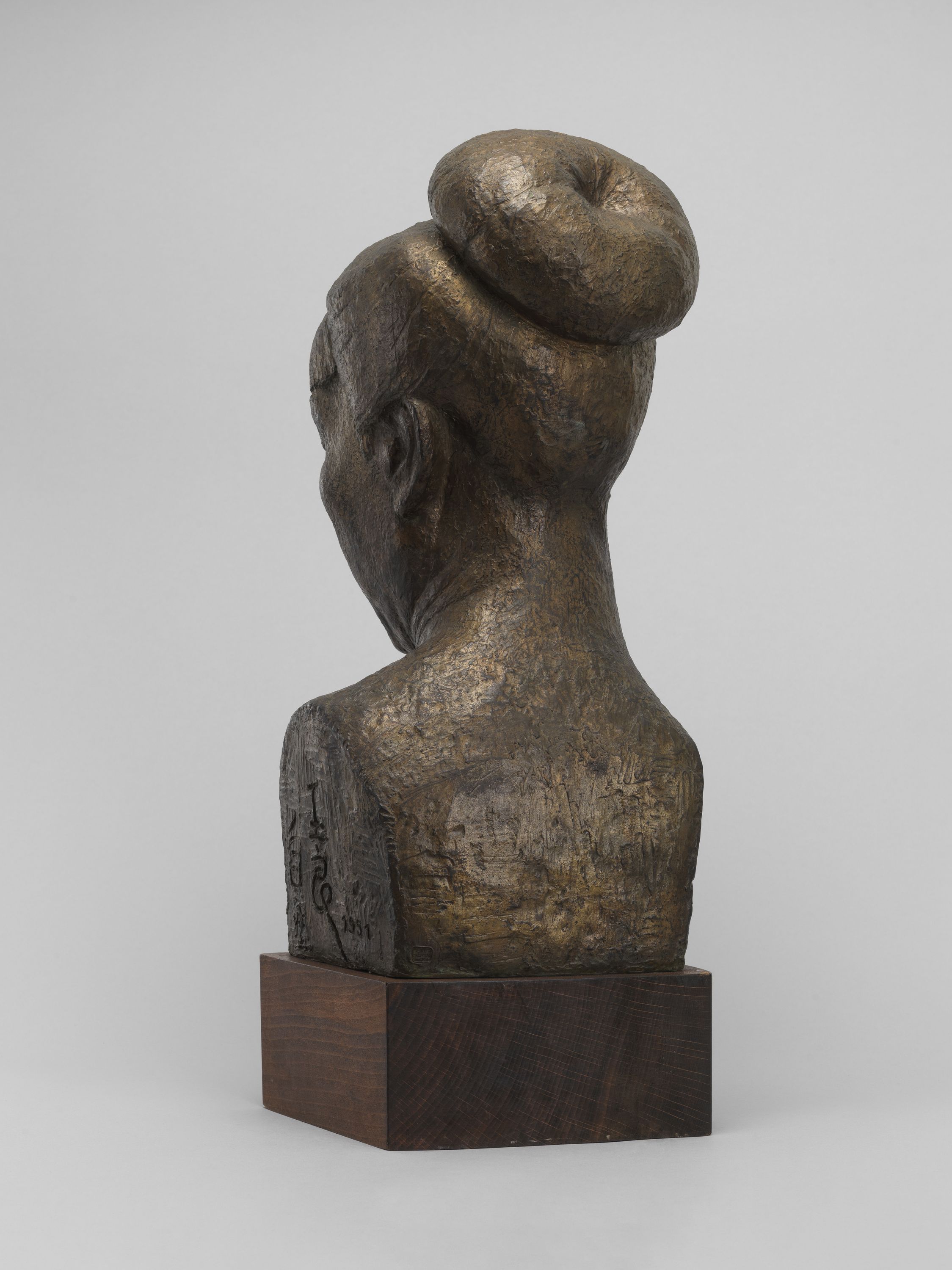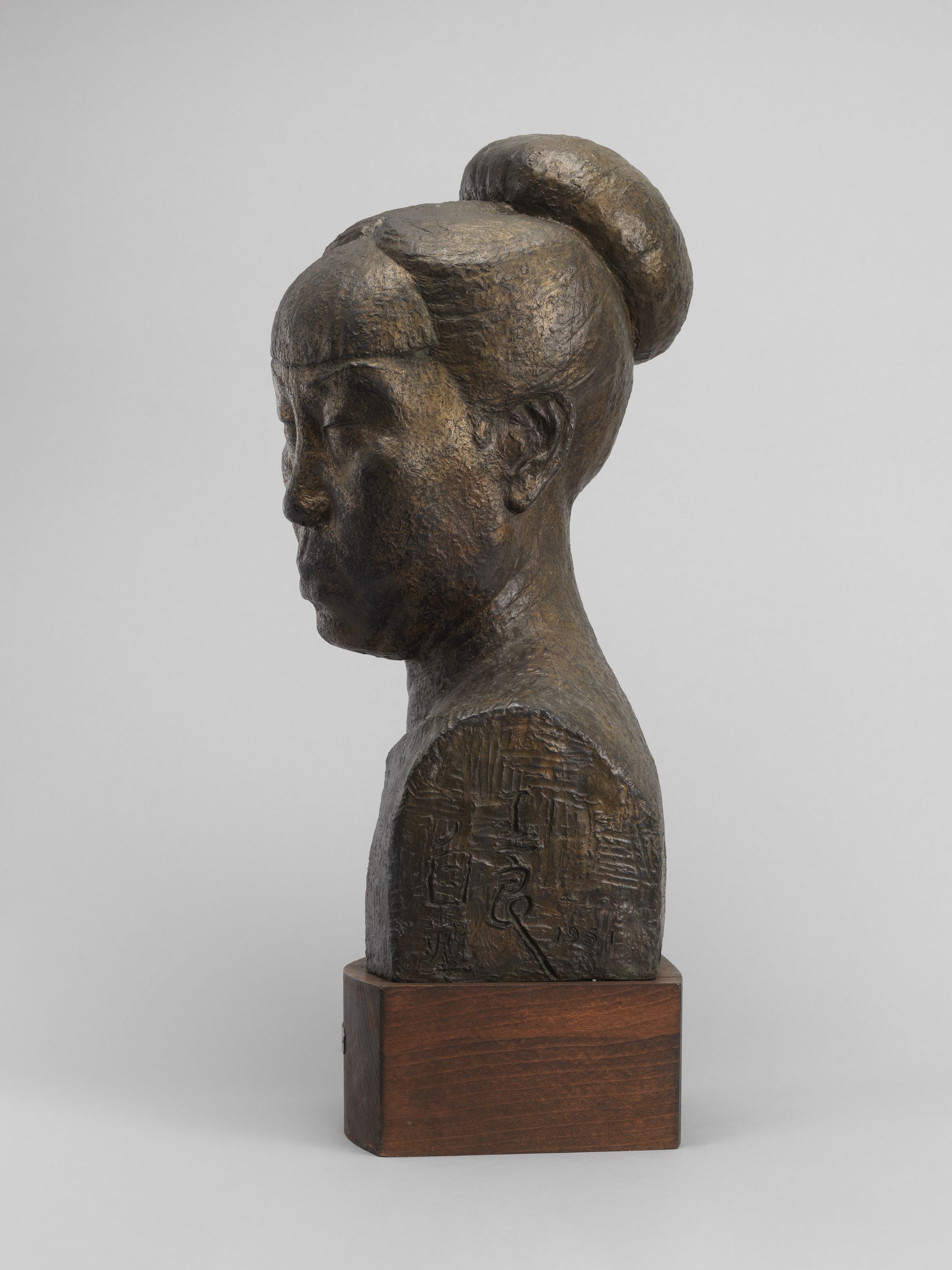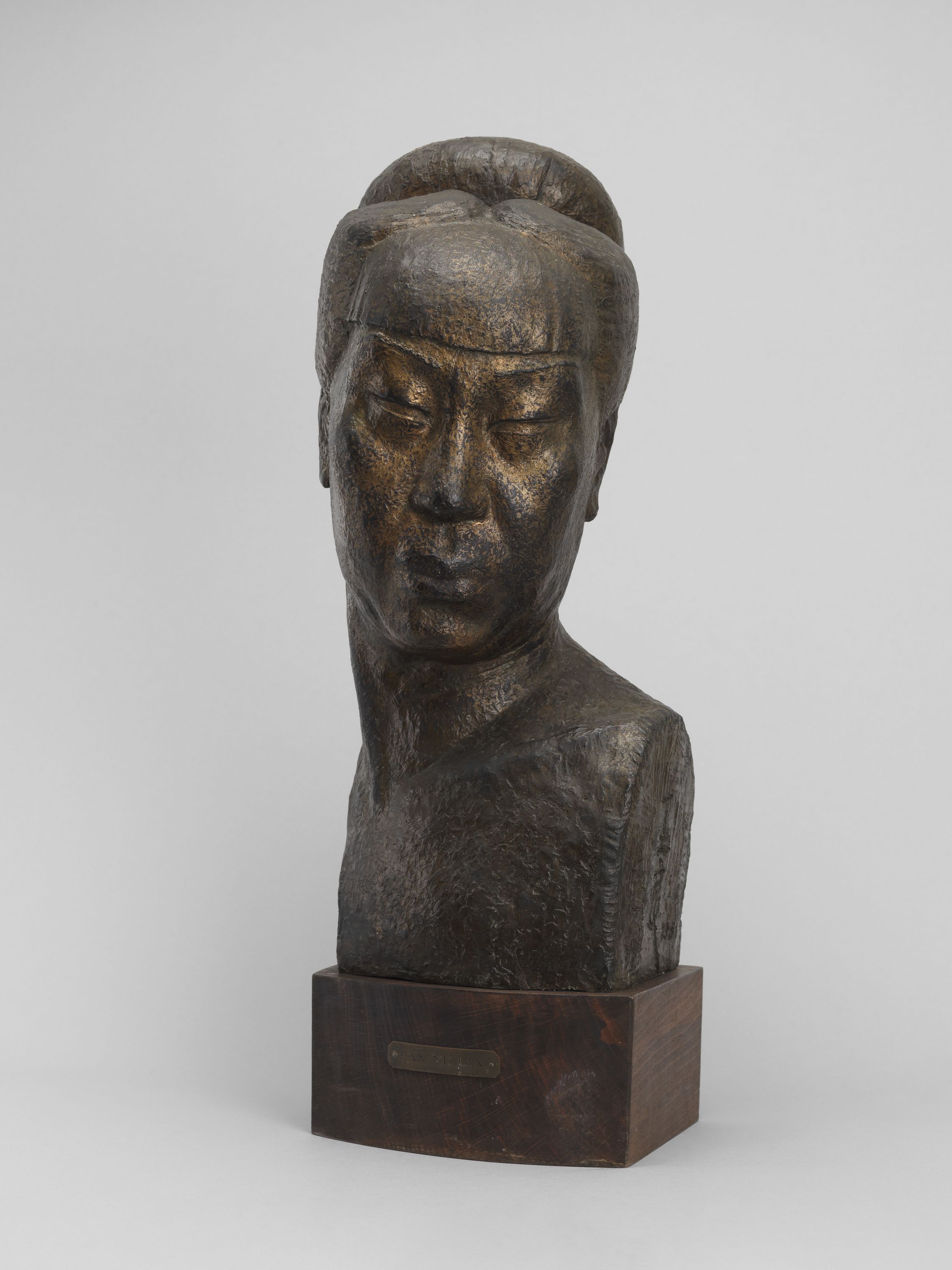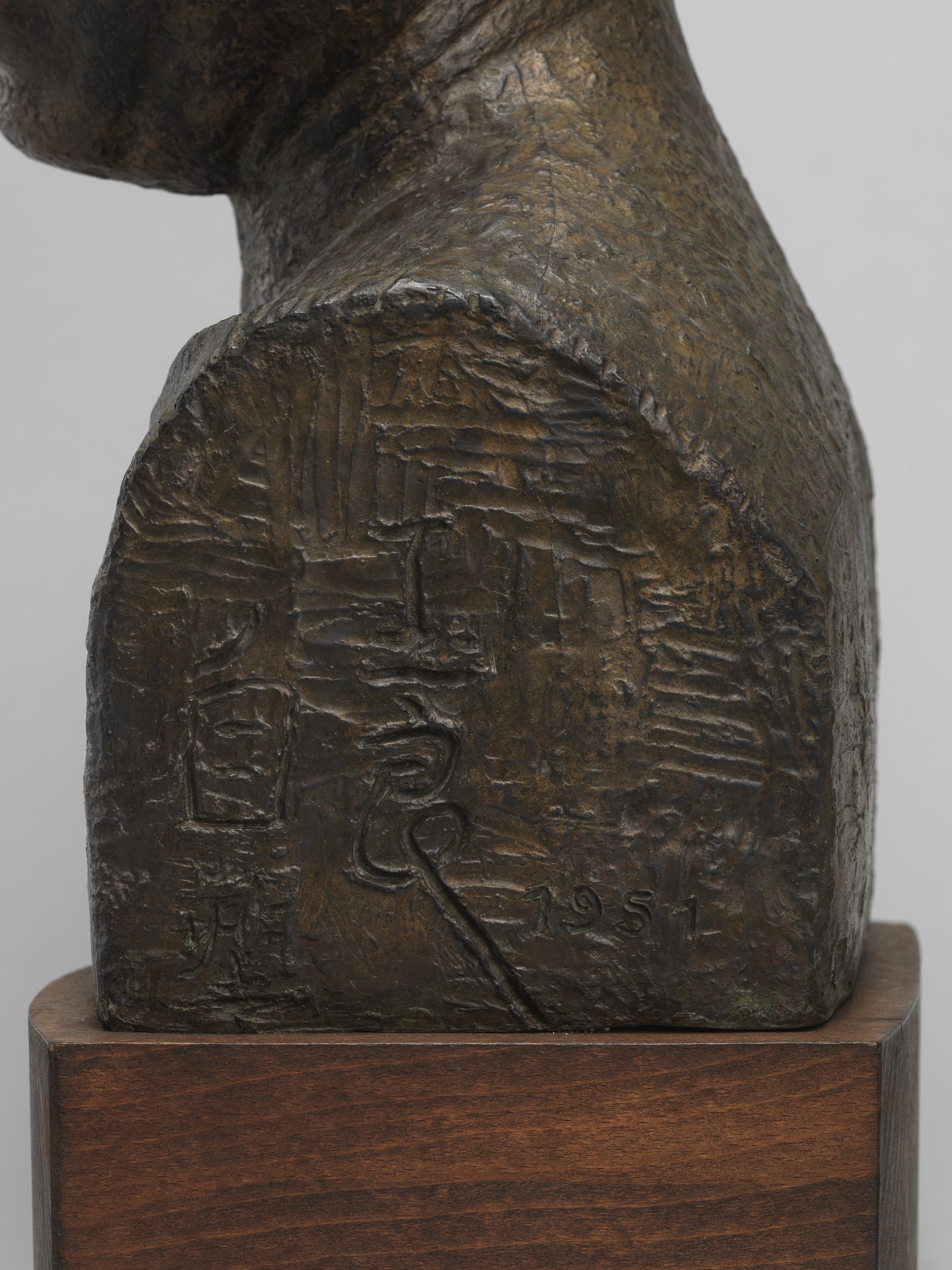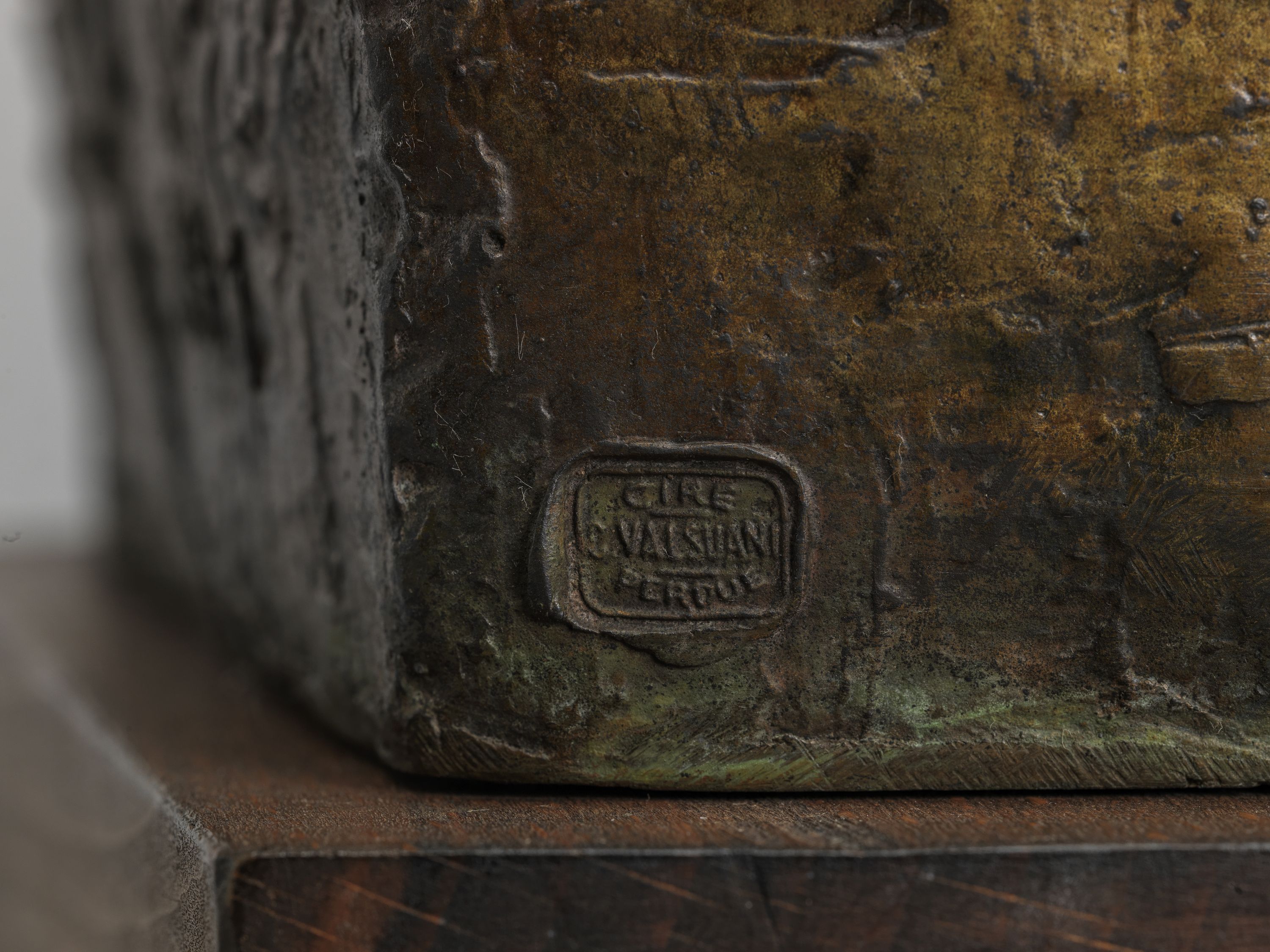
Autoportrait
Bronze
Statue
Signé en chinois "Autoportrait sculpté de Yuliang"
Don manuel : République Populaire de Chine. Ambassade (France)
M.C. 9700
Inscription and signature: 玉良自塑
Translation: “Sculpted self-portrait by Yuliang”
Sculptor’s seal: 玉良 Pan Yuliang is better known for her nudes, still lifes and painted portraits than for her sculpture. After graduating from Paris’s École des Beaux-Arts in 1925, she pursued her training for two years at the Conomardi studio at the Accademia di Belle Arti in Rome, in painting and then in sculpture. In 1927, she produced the sculpture Ivres [Intoxicated], on a theme from Greek mythology; much later, in 1957, a bronze Miner; and in 1958, a stone bust of Maria Montessori.
Pan Yuliang’s sculpted self-portrait is more romantic than realist. She portrays herself with eyes half closed, her gaze directed downwards and to the left, her long, thin eyebrows extending towards her temples. Her hair, made up of four simple geometric forms, is arranged in a Chinese style: a large, round bun and straight fringe. In the model’s hair style and pose, this sculpture is connected to two paintings: Self-portrait in a Black Dress of 1940 and the Self-portrait at the Window of 1945. The gold coating over the ochre patina of this sculpted self-portrait gives it an attractive light that spreads into the harmoniously modelled hollows and reliefs. The artist also liked to vary textures by creating visual effects, and in a meticulous treatment of the material, without smoothing the surface. This technique gives her sculptures the appearance of Chinese antiquities in bronze, or bamboos or jades whose surface was treated in the “orange peel” or “nutshell” (caodi 糙地) manner. This marking all over the surface is typical of Pan Yuliang’s sculpture as well as her paintings, in which the subject often appears against a ground of polychrome hatching that removes any empty space.


